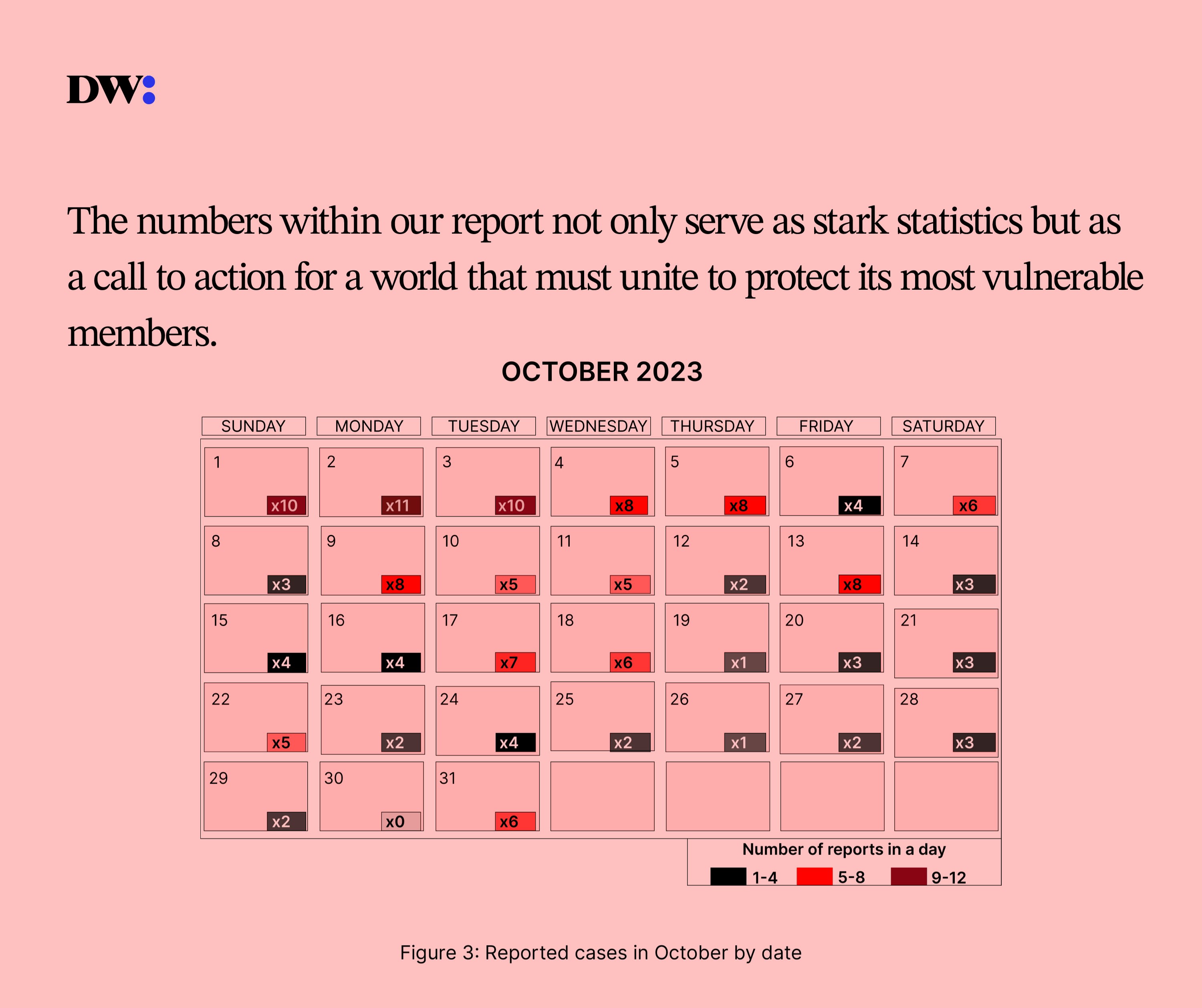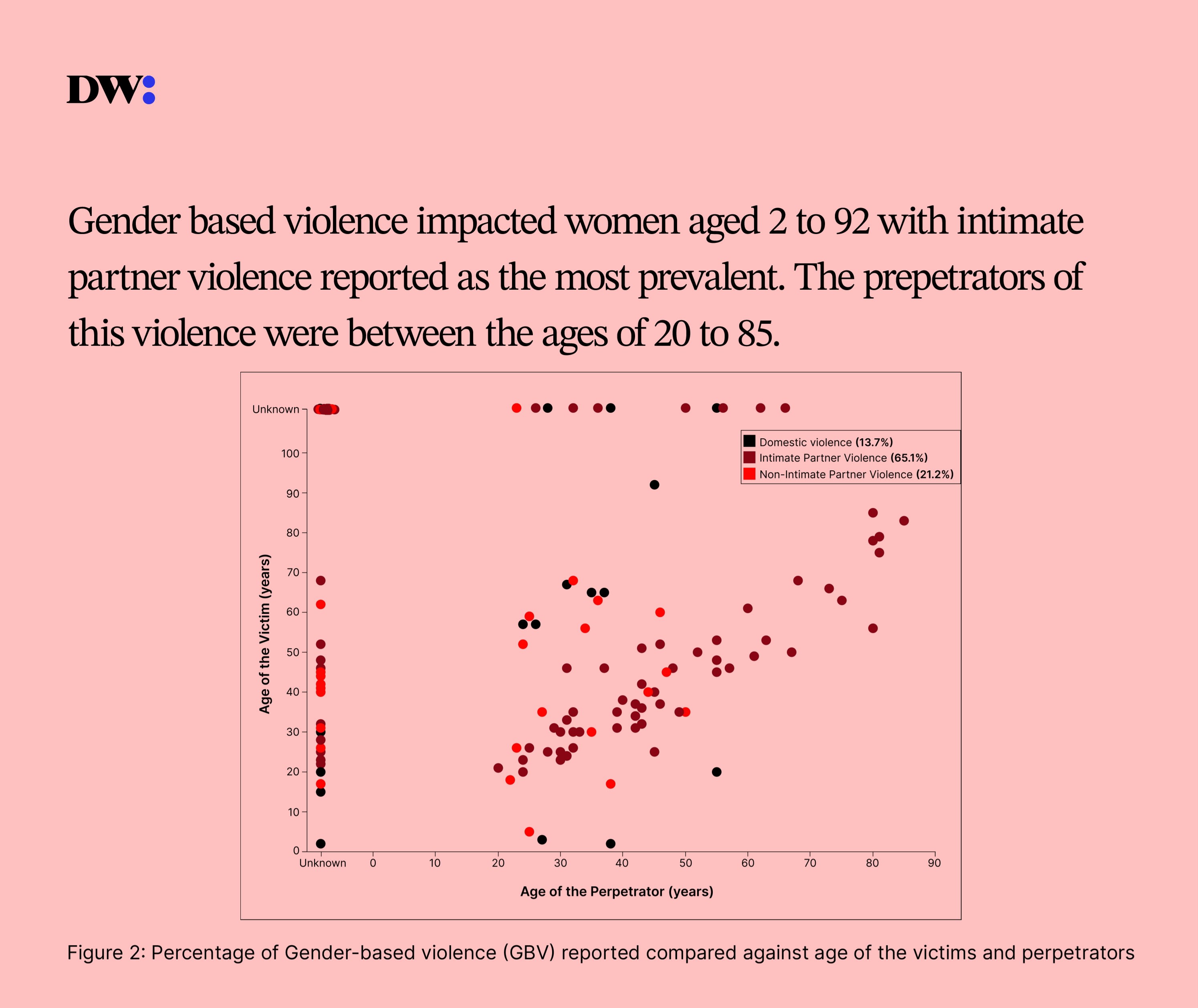The month of October was met with disturbing reports of femicide which reverberated across the internet, igniting online outrage and concern.
Our monthly report serves as a vital repository of data, shedding light on the extent of this societal issue. It underscores the urgency for comprehensive measures to combat this pervasive problem, pushing for increased awareness, intervention, and support for victims. The numbers within our report not only serve as stark statistics but as a call to action for a world that must unite to protect its most vulnerable members.
The #JusticeforAusta campaign finally saw a silver lining with Benjamin Best arrested at a Sierra Leone nightclub and waiting to be extradited to Nigeria. A sad report also rocked the news with the death of Justina Otuene, a 20-year-old student of the University of Port-Harcourt who was killed by her boyfriend.
These instances prompted discourse on social media, stating that women are always cautionary tales and never seen as victims in cases of femicide. It is important to let sympathy for these women always take precedence rather than moral lessons because they don’t stop women from being killed no matter the precautions they take.
The dialogue on social media sheds light on the critical need to address the underlying issues that lead to such acts of violence and radicalization. This is not about pitting one gender against the other; rather, it’s about recognizing the urgency of addressing the systemic problems that perpetuate violence against women and girls.
The focus must be on promoting gender equality, educating young individuals about respect, consent, and empathy, and creating an environment where everyone is treated with dignity and respect. Only through such comprehensive efforts can we hope to put an end to the devastating impact of gender-based violence and femicide.
The question remains: Do women cease being victims of gender-based violence, regardless of age? Can they find justice even in the grave? Why do their perpetrators still roam freely, unaccountable for their heinous actions?

In the span of October 1st to October 31st, an alarming total of 146 cases of gender-based violence surfaced in 22 countries globally. The United States took the lead with 69 reports, closely followed by India with 35. Intimate partner violence emerged as the most prevalent form, affecting women ranging from 2 to 92 years old.
The United Nations grimly acknowledges that we are far from achieving Sustainable Development Goal 5 (on female equality and empowerment) as we approach the halfway mark in the race to meet the 2030 Agenda for Sustainable Development. In 2018, one in every seven women (13 per cent of women aged 15 to 49) reported experiencing physical and sexual violence from an intimate partner or husband in the preceding 12 months.
These figures do not even encompass the impact of the COVID-19 pandemic, which has heightened the risk factors for violence against women. UN Women reported that during this pandemic, 7 out of 10 women reported an increase in domestic violence and 3 out of 5 women reported an increase in sexual harassment in public places. Also, according to the World Health Organization, approximately 736 million people have fallen victim to physical or sexual violence by an intimate partner or sexual assault by a non-partner—a statistic that has remained distressingly stable over the past decade.

Most of the horrifying cases of gender-based violence reported in the United States were murder-suicides, women killed while pregnant, women killed in front of their children and women whose partners and children were killed because of their estranged partners.
In Nigeria, a man murdered his wife because of a disagreement, a woman was killed while she was jogging and another was killed by her partner whom she had a kid for.
The profoundly troubling pattern continued globally, from India to South Africa to the United Kingdom to Canada to Australia as women were killed by their scorned exes, killed by their partners and their bodies dumped with multiple stab wounds.
The pressing question we must address is: When do we move beyond mere outrage and translate our empathy into tangible action? What do we do when there is no more outrage? When do we build a world where justice prevails, where every life is valued, cherished, and protected? The time has come for us to transform our collective anguish into unyielding advocacy, to demand an end to the cycle of violence, and to create a future where every woman can live free from fear and violence.

Leave a Reply